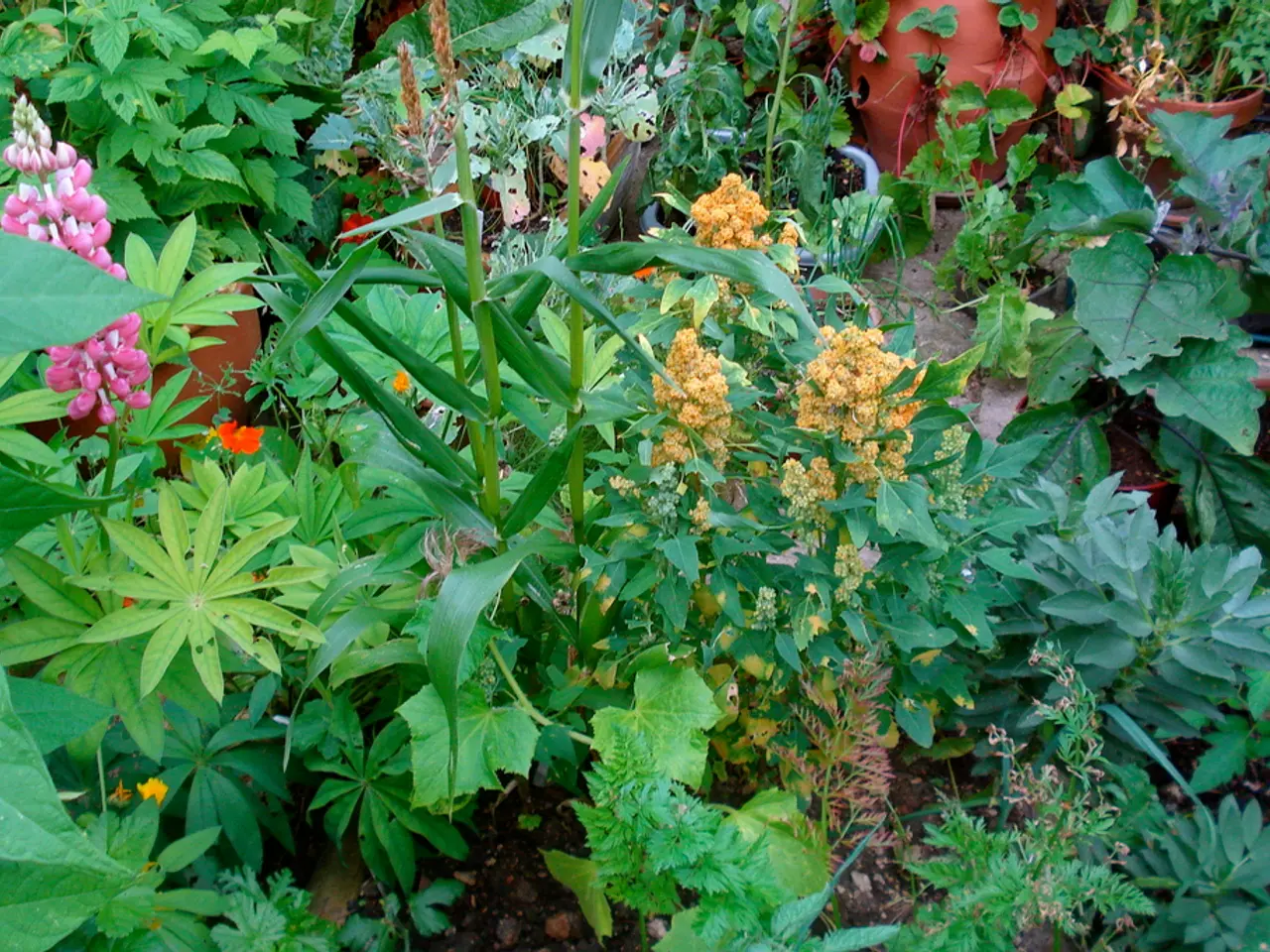Guide to Nurturing and Maintenance of Prayer Plants: Comprehensive Information You Require
The Prayer plant (Maranta leuconeura), with its striking foliage adorned with white or red veining, patterns, lines, shading, and blotches, is a beautiful addition to any home. This tropical perennial native to the rainforests of Central and South America thrives in an environment that mimics its native habitat, paying careful attention to humidity, temperature, and light.
Light
To keep your prayer plant thriving, place it in a shady window or protect it from brighter light with a sheer curtain. Bright, indirect light is best; avoid direct sun which can bleach leaves. Low light causes dulling of leaf color.
Water
Prayer plants require consistent moisture but not waterlogging. Overwatering can cause root rot, while underwatering leads to brown leaf edges or leaf drop. Use distilled water if possible to avoid mineral deposits. In the growing period of March through September, keep soil moist. In the winter, allow the top inch of soil to dry out before watering again.
Humidity
High humidity (around 50-60%) is important for prayer plants, as they are native to tropical areas. Use a humidifier or pebble tray if indoor air is dry. Levels below 40% can stress the plant.
Temperature
Maintain the temperature between 65-80°F (18-27°C). Temperatures below 60°F cause stress and limp, dropping leaves. Below 55°F can lead to browning or black leaves and curling.
Fertilizer
Fertilize every two weeks during the spring and summer with a balanced liquid fertilizer diluted to half strength, and reduce fertilization in winter.
Troubleshooting
- Brown leaf edges or tips: Usually due to low humidity or inconsistent watering (underwatering or salt buildup from fertilizers). Increase humidity, check water quality, and reduce fertilizer strength.
- Yellowing leaves and wilting: Possible overwatering causing root rot. Check soil drainage, reduce watering frequency, and ensure proper pot drainage.
- Loss of leaf color or pale leaves: Insufficient light. Move the plant to brighter indirect light, avoid direct sun which can bleach leaves.
- Soft or limp leaves: Often related to temperature stress, especially below 60°F. Move plant away from cold drafts and maintain consistent warmth.
Regularly monitor soil moisture, humidity, light, and temperature to keep the prayer plant healthy and vibrant.
Prayer plants do best in a soil-based potting mix made for houseplants. Avoid the use of hard water, as it will leave mineral deposits on the foliage or in the soil.
With proper care, your prayer plant can grow to be 12-15 inches (30-38 cm) tall. Learning how to grow a prayer plant is easy and the rewards are well worth any issues you may come across along the way.
Remember, prayer plants are prone to pests like spider mites, mealybugs, and aphids. It's a good idea to inspect new plants thoroughly before bringing them indoors. They are also susceptible to several diseases, including Cucumber mosaic virus and Helminthosporium leaf spot. Infected plants should be thrown away or treated with a fungicide for Helminthosporium leaf spot.
[1]: [Link to a reliable source about prayer plant care] [2]: [Link to a reliable source about prayer plant troubleshooting] [3]: [Link to a reliable source about prayer plant propagation]
Incorporating prayer plants into your home decor not only enhances your home-and-garden lifestyle but also your home's ambiance with their stunning foliage. To ensure the prayer plant's longevity, consider its lifestyle needs such as humidity, light, and soil conditions as outlined in the care guide. Furthermore, gardening enthusiasts might find delight in propagating prayer plants, thus expanding their home-and-garden assortment. [Link to a reliable source about prayer plant care] [Link to a reliable source about prayer plant propagation]




